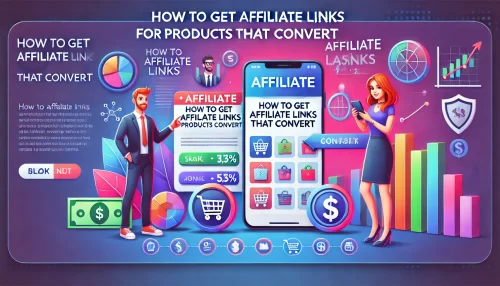Is the thirstyaffiliates plugin really the secret to earning passive income? Can one simple WordPress tool turn everyday blog posts into automated money-makers? If you’ve been trying to monetize your content without spending hours managing affiliate links, you’ve probably wondered if this plugin lives up to the hype.
The ThirstyAffiliates plugin promises to simplify affiliate marketing by automating link management, tracking performance, and making your site more profitable—without the usual manual effort. But does it actually deliver consistent results? And how can you use it to build a stream of income that doesn’t demand your constant attention?
In this guide, I’ll break down exactly what makes this plugin so powerful, how to set it up for success, and what features can quietly work in the background to grow your revenue. Let’s take a closer look at whether ThirstyAffiliates really is your shortcut to sustainable, hands-off affiliate earnings.
How ThirstyAffiliates Plugin Powers Passive Income Growth
The thirstyaffiliates plugin is more than a tool—it’s a quiet workhorse that helps you earn while you sleep. If you’ve ever felt overwhelmed trying to manage affiliate links across dozens of blog posts, this plugin steps in to automate and optimize the process.
Uncovers Affiliate Links That Convert Without Extra Effort
One of the simplest yet most effective things the plugin does is reveal which of your links are actually doing the heavy lifting. It tracks click data behind the scenes so you can identify top performers without needing another analytics tool.
Instead of guessing what works, you get real insights. Maybe a link buried in your second paragraph drives more clicks than the one at the top. With this data, you can make small tweaks that boost revenue significantly—all without writing a new post.
For example, let’s say you promote a handful of tools in a blog post about growing a YouTube channel. By reviewing your click stats from the plugin dashboard, you can see which tools your audience is actually curious about and then double down on those.
This level of insight turns your content from a blind attempt at monetization into a refined system that consistently improves with every blog you publish.
Turns Basic Blog Posts Into Revenue-Generating Assets
You don’t need to create massive affiliate campaigns or write sales-driven content to make money. With the thirstyaffiliates plugin, even your informational or how-to blog posts can bring in income passively.
Let me explain how: once you’ve added your affiliate links using the plugin, they’re automatically embedded in a clean, professional way that doesn’t interrupt the reading experience. Even old posts become monetized opportunities when you go back and insert smart links.
What’s more, you can use features like auto-linking (which we’ll dive into later) to sprinkle affiliate links throughout your entire blog archive. This means one plugin setting can instantly turn a hundred posts into potential profit sources.
You’re not just writing content—you’re building digital real estate that earns income over time with minimal ongoing effort.
Automates Tedious Link Management Behind the Scenes
Manually updating or managing affiliate links is a major time sink, especially if you work with several affiliate programs. That’s where thirstyaffiliates truly shines—it eliminates the need for repetitive edits and messy spreadsheets.
The plugin stores all your affiliate links in a central dashboard. From there, you can update one link and instantly apply that change across every blog post that uses it.
Let’s say your affiliate program changes their tracking URL. Instead of digging through 20+ posts to update it, you simply replace it in your ThirstyAffiliates dashboard and you’re done. The updated link syncs everywhere it appears.
This level of automation keeps your links accurate, ensures your tracking doesn’t break, and prevents you from losing commissions due to expired or mistyped URLs. It’s small on the surface, but it saves hours over time and protects your earnings.
Blends Monetization Seamlessly Into Your Existing Content
Good affiliate content doesn’t feel like an ad—it feels like a helpful tip. The thirstyaffiliates plugin helps maintain that balance by making it easy to insert affiliate links that don’t feel intrusive.
You can choose whether to cloak the links (more on that soon), customize how they appear, and control whether they open in new tabs. You can also label them clearly so readers know what they’re clicking, which builds trust.
The plugin allows you to weave links naturally into your paragraphs, link product names, or even add subtle call-to-action buttons. This way, your content remains useful and engaging while also guiding readers toward a product or service you recommend.
Instead of adding banners or annoying popups, your monetization lives quietly in the content—doing its job without compromising your user experience.
Powerful Features That Make ThirstyAffiliates Stand Out

What separates the thirstyaffiliates plugin from other affiliate tools isn’t just its clean interface—it’s the powerful features under the hood that help you scale earnings without scaling your workload.
Cloaking Links to Build Trust and Increase Click-Through Rates
Affiliate links often look long and messy, which can turn readers away. Cloaking them with ThirstyAffiliates replaces those awkward strings of characters with clean, branded URLs that inspire confidence.
Instead of a raw URL like https://example.com/?ref=498afg32, you get something like yoursite.com/go/favorite-tool.
This subtle shift makes a big difference. Readers are more likely to click when a link looks professional and transparent. It also protects your commissions from link hijacking and keeps competitors from stealing your affiliate structure.
You can choose to cloak or uncloak based on the affiliate network’s guidelines, giving you flexibility and control while staying compliant.
Auto Keyword Linking for Hands-Free Monetization at Scale
This is one of my favorite time-saving features: you can set specific keywords to automatically become affiliate links whenever they appear on your site.
Let’s say you’re an affiliate for an SEO tool. Every time the word “SEO strategy” shows up in your blog posts, the plugin can automatically turn it into a clickable affiliate link—no need to insert it manually each time.
Not only does this save you hours of work, but it ensures you’re monetizing content even if you forget to add a link. It also applies retroactively, so older posts benefit from the same automation.
You have full control over how often the auto-link appears per post, whether it opens in a new tab, and whether it includes nofollow attributes. It’s smart, flexible, and incredibly effective.
Geolocation Redirects to Maximize International Commissions
One often-overlooked opportunity in affiliate marketing is international traffic. If you’re sending UK or Canadian readers to a U.S.-only affiliate offer, you’re potentially leaving money on the table.
ThirstyAffiliates solves this by allowing you to redirect users based on their location. You can send U.S. traffic to one offer, and redirect European users to another version of the same product that’s available in their region.
This feature helps you earn more from global visitors and creates a better user experience. No more broken offers or “this product isn’t available in your country” messages—just smart routing that matches readers with the right links.
It’s a passive, behind-the-scenes win that boosts your affiliate revenue without requiring extra content.
Comprehensive Link Categorization for Better Analytics
When you’re managing multiple affiliate programs, keeping your links organized is key. The thirstyaffiliates plugin lets you create custom categories so you can group links by type, program, product, or campaign.
This might not seem like a big deal—until you want to run a report or compare performance between different offers. With categories in place, you can track which link types are driving the most revenue and where to focus your efforts.
For example, you might discover that all your tools in the “Productivity” category are outperforming those in “Web Hosting.” That’s an insight you can act on immediately by promoting what works and reworking what doesn’t.
Categories also help streamline your workflow. When you’re writing new content, you can easily pull from a categorized list of trusted links instead of digging through disorganized options.
Built-In 404 Checker to Fix Broken Links Instantly
Broken affiliate links hurt both your earnings and your credibility. If a reader clicks and lands on an error page, they’re unlikely to trust your future recommendations—and you definitely won’t earn a commission.
ThirstyAffiliates includes a built-in 404 checker that alerts you when a link is broken or returns an error. This means you can fix issues before they impact your readers or your bottom line.
You don’t need to rely on external tools or do manual testing. The plugin monitors your links automatically and notifies you when something needs your attention.
It’s like having a quality-control system that protects your income around the clock.
How to Set Up ThirstyAffiliates for Long-Term Profitability
Getting the ThirstyAffiliates plugin up and running doesn’t take long, but setting it up the right way makes all the difference in long-term results. A thoughtful setup ensures you spend less time managing links and more time watching your earnings grow.
Installing and Activating the Plugin in Under 10 Minutes
Let me walk you through this because it’s simpler than it looks, even if you’re not tech-savvy.
Start by heading to your WordPress dashboard and clicking on Plugins > Add New. Search for ThirstyAffiliates and install the free version. If you’ve purchased the Pro add-on, upload the .zip file you received and activate it.
Once it’s installed, you’ll see a new “ThirstyAffiliates” menu in your sidebar. This is your central hub for managing, tracking, and customizing every affiliate link across your site.
The plugin will prompt you to configure a few basic settings—like your preferred link prefix (e.g., /go/ or /recommend/), whether to cloak links by default, and if you’d like to nofollow links (which I usually recommend for SEO purposes).
In less than 10 minutes, you’ll have a fully functioning affiliate system installed and ready to use.
Creating Affiliate Link Categories for Easy Campaign Tracking
If you plan to add more than a handful of links, organizing them from the start will save you a lot of trouble down the line.
Inside the plugin dashboard, you can create custom categories like “Web Hosting,” “Email Marketing Tools,” “Productivity Apps,” or whatever fits your niche. This allows you to sort links not just for visual clarity, but also for smarter reporting and testing later.
Here’s why categories matter:
- They help you find links quickly when updating old posts or writing new ones.
- You can compare performance across categories to spot which types of products earn you more.
- You can use categories to automate specific rules, like applying auto-linking to only certain product types.
Think of categories like folders—they don’t take long to create, but they keep everything organized when your affiliate library grows to hundreds of links.
Cloaking vs. Uncloaking: When to Use Each Option Wisely
Cloaking affiliate links is one of the main benefits of the thirstyaffiliates plugin. It replaces long, messy URLs with clean, branded links that look more trustworthy and professional.
For example:
- Uncloaked: https://affiliate.network.com/refid=12345/product?source=blog
- Cloaked: https://yourdomain.com/go/product-name
But here’s the catch: not every affiliate program allows cloaking. Amazon Associates, for instance, explicitly prohibits it. Cloaking a link against a program’s terms could result in you losing commissions—or even your account.
So how do you decide when to cloak?
Cloak your links if:
- The affiliate program allows it.
- You want cleaner, branded links that improve click-through rates.
- You want to protect your links from hijacking.
Don’t cloak your links if:
- The affiliate program (like Amazon) disallows it.
- The program uses special parameters for tracking that might break if cloaked.
ThirstyAffiliates lets you choose per link whether to cloak or not, so you have full control. Just be sure to double-check each network’s policy.
Embedding Links Strategically Without Hurting User Experience
There’s a fine line between monetizing and overwhelming your readers. ThirstyAffiliates gives you tools to add links naturally so they enhance your content rather than interrupt it.
Here’s how to do it well:
- Add links only where they make sense contextually. If you’re talking about SEO tools, that’s the time to link to your favorite one.
- Don’t overdo it. Two or three links in a 1,000-word article often works better than stuffing ten into every paragraph.
- Use anchor text that flows naturally. Instead of writing “click here,” use “best SEO platform” or a product name.
You can also insert links manually or use the auto-linking feature to embed them based on keywords. Both options let you scale without sacrificing quality.
Embedding should always feel like a value add—not a sales pitch. If it helps the reader and makes you a commission, it’s a win-win.
Pro Tips to Multiply Earnings Using ThirstyAffiliates

Once your thirstyaffiliates plugin is properly set up, the next step is to unlock its full potential. These tips go beyond the basics and help you turn your content into a consistent income engine.
Use Auto-Linking in Evergreen Content to Scale Monetization
Auto-linking is one of the plugin’s most powerful features. You can set specific keywords to automatically become affiliate links whenever they appear across your entire site.
Let me give you an example. Say you promote a tool called “ContentStudio.” You can tell the plugin: every time the phrase “social media scheduler” appears, turn it into your affiliate link for ContentStudio.
Here’s why it works so well:
- It saves time—you don’t need to manually insert links every time.
- It monetizes old and future posts automatically.
- It keeps your internal linking strategy consistent.
Just be careful not to overdo it. Limit how many times a keyword gets linked per post (I usually go with 1–2 max). This keeps the user experience clean and avoids link fatigue.
Auto-linking works best in evergreen content—those long-lasting blog posts that get traffic month after month. Set it once, and you’ll keep earning without lifting a finger.
Track Top-Performing URLs to Optimize Affiliate Strategy
Knowing which links are performing is the key to growing your earnings.
Inside the ThirstyAffiliates dashboard, you’ll find simple yet effective reporting tools. You can view stats like:
- Number of clicks per link
- Most-clicked links across your site
- Which categories generate the most activity
Use this data to:
- Double down on high-performing links
- Move those links higher up in the content
- Improve underperforming links with new anchor text or placement
For example, if your “Email Marketing” link consistently outperforms “Web Hosting,” maybe your audience is more interested in automation tools. That insight can shift your content focus for higher ROI.
Tracking helps you stop guessing and start optimizing based on what works.
Split-Test Affiliate Offers Across Posts Using Category Tags
If you want to take things to the next level, start testing different affiliate offers within the same content category.
Here’s how it works:
- Create multiple affiliate links for similar tools (e.g., Aweber vs. MailerLite)
- Assign them to different categories (e.g., Email Tools A and Email Tools B)
- Track clicks separately to see which offer gets more attention
You don’t need advanced A/B testing software. Just compare category performance in your dashboard, or swap offers manually and monitor which one gets better results.
This kind of testing helps you promote the right tools for your audience, not just the ones with the highest commissions.
Integrate with Google Analytics for Deeper Link Insights
For those who want even more detailed tracking, the plugin integrates easily with Google Analytics.
This lets you measure:
- Which traffic sources lead to the most affiliate clicks
- How long visitors stay before clicking a link
- Conversion paths that lead to commissions
You’ll need to set up event tracking in Google Analytics and tag affiliate links as events. Tools like MonsterInsights or Google Tag Manager can simplify this if you’re not comfortable with code.
Once set up, you can pull deeper insights like:
- Do email readers or search visitors click more?
- Which posts have the highest affiliate click-through rates?
- What percentage of readers take action on affiliate offers?
Combining ThirstyAffiliates data with Google Analytics paints a full picture—one that helps you fine-tune both your content and monetization strategies.
Hidden Time-Savers Most Bloggers Miss in ThirstyAffiliates
There’s a lot more under the hood of the thirstyaffiliates plugin than most bloggers realize. Once you get comfortable with the basics, digging into these lesser-known features can save hours of manual work and make your entire affiliate setup much more efficient.
Scheduling Link Appearances for Limited-Time Offers
Sometimes, you want an affiliate link to appear only during a specific promotion or campaign—like a Black Friday deal or a holiday sale. Instead of manually adding and removing the link, you can use the scheduling feature built into ThirstyAffiliates.
Here’s how it works:
- Set a start and end date for when the link should be active.
- The plugin will automatically show or hide the link based on your settings.
- After the promotion ends, the link disappears from your content without you needing to lift a finger.
This is perfect for running seasonal affiliate campaigns or flash sales while keeping your content clean and up to date the rest of the year. You can also swap in different offers throughout the year without rewriting your posts.
If you’re promoting time-sensitive discounts, scheduling can help you stay consistent without scrambling every time a new deal rolls out.
Bulk Importing Affiliate URLs from CSV for Quick Setup
If you’re migrating from another tool or just getting started with a long list of affiliate offers, entering them one by one can be exhausting. Fortunately, ThirstyAffiliates supports bulk importing through CSV files.
This feature allows you to:
- Upload dozens (or hundreds) of affiliate links in one go.
- Assign categories, names, and cloaking preferences right from your spreadsheet.
- Skip the repetitive task of manual entry.
It’s especially useful if you’re moving from another plugin or affiliate platform. Instead of starting from scratch, you can have your affiliate link library ready within minutes.
Just make sure your CSV file follows the correct format (which you can find in the plugin documentation), and you’re good to go.
Using Shortcodes to Dynamically Insert Links Sitewide
Shortcodes might sound technical, but they’re incredibly simple and powerful once you understand how they work.
Every link you create in ThirstyAffiliates generates a unique shortcode. You can copy and paste this code into any post, page, or widget on your site. If you ever need to update the destination URL, all instances of that shortcode will automatically update too.
Here are a few smart ways to use shortcodes:
- Add a favorite product recommendation to your sidebar.
- Include links in your email templates using WordPress shortcodes.
- Reuse links across multiple posts without re-editing each one.
This helps keep your affiliate links consistent and easy to manage—especially when you’re promoting a core set of products across your site.
It’s a quiet efficiency booster that reduces the risk of outdated or mismatched links.
Creating Redirect Rules to Future-Proof Your Affiliate Links
Redirect rules are a hidden gem in ThirstyAffiliates that can prevent headaches down the road. They let you automatically redirect users from one affiliate link to another, which is especially useful when:
- An affiliate program changes platforms or tracking systems.
- You want to promote a new version of a product.
- A vendor rebrands or updates their landing page URL.
Instead of manually editing every blog post where that link appears, you can set a rule that quietly redirects traffic from the old link to the new one.
Let’s say you were linking to yourdomain.com/go/tool-a, but now you’ve switched to promoting tool-b. Just update the redirect rule, and the change is live across your entire site instantly.
This is a simple but strategic move to keep your monetization streamlined and adaptive, even as offers evolve over time.
Key Integrations That Supercharge ThirstyAffiliates
The thirstyaffiliates plugin is powerful on its own, but when combined with the right tools, it becomes an even stronger part of your affiliate marketing system. These integrations help you analyze, automate, and amplify your results.
WordPress SEO Plugins Like Rank Math and Yoast
SEO is a major part of affiliate marketing, and if your content isn’t being found, it won’t convert. ThirstyAffiliates integrates smoothly with popular SEO tools like Rank Math and Yoast, so you can ensure your monetized posts are also optimized for search.
Here’s what this integration helps you do:
- Maintain SEO-friendly URL structures for your affiliate links.
- Avoid penalties by using proper nofollow or sponsored attributes.
- Use smart internal linking strategies without sacrificing site health.
Rank Math, in particular, offers detailed schema options, link tracking, and focus keyword management that work well alongside your affiliate link strategy. Yoast makes it easy to set canonical tags and keep your on-page SEO tight.
Together, these tools allow you to build traffic and monetize it effectively—without working against yourself.
Email Marketing Tools (ConvertKit, MailerLite, etc.)
Email marketing plays a big role in promoting affiliate links, and ThirstyAffiliates gives you the tools to use those same links in your emails with clarity and consistency.
Here’s how the integration works:
- You can copy clean, trackable links from ThirstyAffiliates and embed them directly in your emails.
- Because the links are cloaked or branded, they’re more likely to pass spam filters and look trustworthy.
- You can even schedule or rotate links based on email campaign timing.
If you use platforms like ConvertKit, MailerLite, or ActiveCampaign, you can sync your email calls-to-action with the exact links you promote on your blog. This unified strategy helps you drive consistent clicks and reinforce your affiliate recommendations across multiple channels.
Plus, if a product link ever changes, updating it in ThirstyAffiliates automatically updates it in every email where you’ve used the shortcode or direct link.
WooCommerce for Promoting Affiliate Products in Storefronts
If you run a WooCommerce store, there’s a good chance you also promote digital tools, software, or courses through affiliate links. ThirstyAffiliates pairs well with WooCommerce by allowing you to mix affiliate products with your own offerings.
This is especially useful if:
- You want to recommend a third-party tool alongside your own product.
- You promote complementary services as part of a package.
- You run a curated store that blends affiliate and physical products.
You can create a product listing in WooCommerce and set it to link to your affiliate URL instead of a checkout page. This keeps the shopping experience native to your site, while still earning you commissions through external sales.
It’s a smooth way to blend e-commerce and affiliate strategies without having to build two separate systems.
Link Tracking with Google Tag Manager and MonsterInsights
If you’re serious about tracking what’s working, integrating ThirstyAffiliates with Google Tag Manager or MonsterInsights takes your reporting to the next level.
Here’s what you gain:
- Precise tracking of which pages generate the most affiliate clicks.
- Data on user behavior before and after clicking a link.
- Insights into which traffic sources (email, social, search) convert best.
Google Tag Manager lets you set up custom events that monitor affiliate link clicks and send that data directly to Google Analytics. If that feels too technical, MonsterInsights simplifies the process with a user-friendly interface and ready-made event tracking for outbound links.
This level of detail helps you make smarter decisions. You’ll see what’s working, what’s not, and where to double down.
It’s also invaluable for scaling. If you ever plan to grow your blog into a full-time income stream, having this data early on gives you a strong foundation to build from.
Common Pitfalls and How to Avoid Them With ThirstyAffiliates

While the thirstyaffiliates plugin is designed to simplify your affiliate marketing workflow, it’s still easy to make mistakes that can affect your earnings or even hurt the user experience. Let’s look at a few of the most common pitfalls and how you can sidestep them for long-term success.
Overusing Auto-Linking and Hurting Readability
Auto-linking is a fantastic time-saver, but it’s easy to overdo it. When every third sentence has a highlighted keyword or branded link, your content can start to look cluttered—and readers may feel overwhelmed.
To avoid this, take a less-is-more approach:
- Limit how many times each keyword is auto-linked per post (1–2 is usually plenty).
- Review posts to see how links affect the flow of reading.
- Disable auto-linking on specific posts where it doesn’t make sense.
The goal is to support your content, not distract from it. If it feels like you’re shouting “buy this” every few lines, it’s probably time to scale back. Keep your posts helpful and natural, with links that feel like a trusted recommendation.
Not Categorizing Links, Making Tracking a Nightmare
Skipping link categorization in the beginning might seem harmless—but once you have dozens or hundreds of affiliate links, it quickly becomes a headache. You’ll struggle to find specific links, compare performance, or organize campaigns efficiently.
To prevent this, create simple, intuitive categories from the start:
- Group links by topic, brand, or campaign (like “Web Tools” or “Black Friday 2025”).
- Use categories to filter reporting and auto-linking.
- Add tags to identify seasonal or promotional offers.
Even if you only have a few links today, future-you will thank you for staying organized. Categories give you a cleaner dashboard and more control over your strategy.
Failing to Cloak or Uncloak Based on Network Guidelines
Cloaking affiliate links makes them look cleaner and helps protect your commissions—but not every affiliate program allows it. If you’re not paying attention to the network’s rules, cloaking a prohibited link could lead to account termination or lost income.
Here’s how to avoid this issue:
- Always check the affiliate program’s terms and conditions regarding link cloaking.
- Use the plugin’s option to enable or disable cloaking per link.
- If in doubt, keep links uncloaked and labeled transparently.
Amazon Associates is one of the most well-known networks that does not allow cloaking. In those cases, it’s better to keep the raw URL visible to stay compliant. ThirstyAffiliates gives you flexibility, but it’s up to you to make the right choice per link.
Ignoring Geo-Redirects and Missing International Revenue
If your audience comes from around the world, but all your affiliate links lead to a US-only store or landing page, you’re likely missing out on valuable commissions. This is where geo-redirects come in—but many users skip this feature altogether.
Don’t let international traffic go to waste:
- Set up geo-targeted links that redirect users to the correct regional store or marketplace.
- Create link variations for different countries or continents.
- Test the experience yourself using a VPN or location simulator.
Even if only 20–30% of your traffic is international, redirecting it properly can add a surprising boost to your income. It’s a one-time setup that keeps working silently in the background.
Is ThirstyAffiliates Worth It? Real Costs and ROI Breakdown
Let’s be honest—adding another tool to your blogging stack needs to make financial sense. Whether you’re using the free version or thinking about going Pro, it’s smart to look at what you’re getting and whether the investment pays off over time.
Free vs. Pro: What You Actually Get with Each Tier
The free version of the thirstyaffiliates plugin gives you the core functionality you need:
- Manually create and manage affiliate links
- Apply link cloaking
- Insert links easily into posts
- Basic reporting on click data
It’s a solid starting point, especially if you’re just getting into affiliate marketing. But the Pro version really unlocks the automation and tracking tools that help scale your earnings. With Pro, you get:
- Auto-linking by keyword
- Link scheduling
- Geolocation redirects
- Advanced reports and stats
- CSV bulk import and export
- Broken link checker
- Google Analytics integration
If you rely on affiliate income as a main part of your business—or plan to in the future—the Pro upgrade is worth it for the time savings alone.
Annual Cost vs. Passive Income Potential
The Pro version starts at around $99.60/year for a single site license. For many bloggers, that might seem like a big commitment upfront. But let’s break it down.
Let’s say you earn $5–10 in commission per sale. With the improved link tracking, geolocation, and auto-linking features, you only need to generate 8–10 extra conversions a year to break even.
More realistically, with better tracking and cleaner link management, you’ll be able to optimize your strategy and possibly double your earnings over time. The tool doesn’t just help you save time—it gives you clarity on what works so you can repeat it.
It’s not just a plugin; it’s an affiliate system that quietly helps you work smarter.
Who Should Invest and Who Should Skip
Here’s a quick way to decide whether the Pro version of ThirstyAffiliates is right for you:
You should invest if:
- You publish affiliate content regularly.
- You’re starting to earn commissions and want to scale.
- You manage multiple affiliate programs or link types.
- You want to save time managing and updating links.
You might skip it if:
- You’re brand new to blogging and only using one or two affiliate links.
- You prefer to track everything manually.
- You aren’t monetizing yet and just exploring your niche.
The free version gives you a strong foundation, so there’s no rush. But once you start seeing traction, the upgrade pays for itself quickly.
Comparing ROI with Other Affiliate Link Plugins
There are other tools out there like Pretty Links, Lasso, and AAWP—each with their strengths. But ThirstyAffiliates stands out for WordPress users who want both automation and flexibility without unnecessary complexity.
Pretty Links is a solid competitor but focuses more on link shortening and branding than advanced affiliate features. It lacks things like category tracking, geolocation, and link scheduling.
Lasso offers beautiful product displays and income-focused features, but it’s significantly more expensive (starting at around $300/year). That makes it a better fit for high-traffic blogs or affiliate-focused businesses.
AAWP is great for Amazon-specific affiliates, but it doesn’t offer broader tools for other affiliate programs or marketplaces.
ThirstyAffiliates strikes a good balance between affordability, control, and automation. It’s not the flashiest tool, but it quietly powers results behind the scenes—and for many bloggers, that’s exactly what they need.
ThirstyAffiliates vs. Alternatives: What Really Delivers

With so many affiliate link management tools out there, it can be tough to figure out which one actually meets your needs. If you’re considering the thirstyaffiliates plugin, it helps to see how it stacks up against other popular options. Let’s compare it with a few standout tools to get a clearer picture.
Pretty Links vs. ThirstyAffiliates: Cloaking and Analytics
Pretty Links is often the first alternative that comes up when talking about affiliate link tools. Both plugins offer link cloaking and URL shortening, but they differ in purpose and depth.
Pretty Links focuses primarily on creating clean, trackable URLs. It does this well with:
- Link shortening and redirection
- Basic click tracking
- Simple categorization and groups
It’s great if you just need branded links and straightforward analytics. However, ThirstyAffiliates goes further by layering in features that support long-term affiliate strategies.
With the thirstyaffiliates plugin, you also get:
- Auto-linking based on keywords
- Geolocation redirects
- Advanced categorization and reporting
- Link scheduling and broken link monitoring
For bloggers and content marketers who want more than link beautification—especially those juggling multiple programs—ThirstyAffiliates offers a deeper toolkit. Pretty Links works well for simple needs, but it lacks the robust features needed to scale passive income efficiently.
Lasso vs. ThirstyAffiliates: Design and Monetization Power
Lasso has gained traction for its slick, visually appealing product displays. It’s designed to help bloggers present affiliate products in a more curated, conversion-friendly format.
Here’s what stands out with Lasso:
- Gorgeous link boxes with rich media and CTAs
- Built-in revenue tracking
- Display management across multiple posts
It’s a powerful tool if you want your affiliate links to look like product showcases. That said, it comes at a premium. Lasso starts for free.
On the other hand, the thirstyaffiliates plugin focuses more on behind-the-scenes automation:
- Smart link control with less visual clutter
- Cost-effective pricing (starting under $16 per month)
- Integration with various affiliate networks and link types
If you’re more concerned with link performance, automation, and scale rather than how they visually appear, ThirstyAffiliates offers more value for less money. Lasso wins in design, but ThirstyAffiliates is stronger on control and affordability.
AAWP vs. ThirstyAffiliates: Amazon Focused vs. General Use
AAWP (Amazon Affiliate WordPress Plugin) is built specifically for Amazon Associates. It pulls real-time data from Amazon, including pricing, product images, and ratings, making it a strong tool for those focusing solely on Amazon affiliate links.
Its advantages include:
- Real-time product updates via the Amazon API
- Customizable product comparison tables
- Country-specific targeting for Amazon links
However, AAWP is not designed to support links from other affiliate programs. That’s where the thirstyaffiliates plugin has a clear edge. It supports any kind of affiliate link—Amazon, ShareASale, CJ, private programs, and more.
You can:
- Create cloaked or uncloaked links based on the network’s terms
- Group links across different platforms under one category
- Manage all affiliate offers in one place, not just Amazon
If you’re running a niche site entirely dependent on Amazon, AAWP might be worth the investment. But for content creators promoting a variety of products or services, ThirstyAffiliates offers the flexibility you need.
Why ThirstyAffiliates Wins for Hands-Off Affiliate Management
What makes the thirstyaffiliates plugin shine is how quietly it works in the background. Instead of flashy design or one-network specialization, it focuses on:
- Reducing manual updates through auto-linking and shortcodes
- Giving you control with cloaking, scheduling, and redirection
- Protecting revenue with 404 monitoring and detailed reporting
It’s built for creators who want to earn from affiliate marketing without turning every blog post into a sales page. The goal isn’t to overwhelm your content with monetization—it’s to integrate it smoothly and sustainably.
The plugin grows with your site. Whether you start with ten links or scale to a hundred, it adapts to your workflow instead of forcing you to manage it all manually.
Final Verdict: Is ThirstyAffiliates the Secret Weapon?
So, is the thirstyaffiliates plugin truly the secret to earning passive income from your content? That depends on your goals and how you use it—but in the right hands, it absolutely has the power to transform your affiliate strategy.
When ThirstyAffiliates Transforms into a Passive Income Engine
Passive income doesn’t happen by accident. It’s the result of systems that work while you focus on creating. ThirstyAffiliates becomes that system when:
- You set up auto-linking in evergreen posts
- You manage links with consistent categories and reporting
- You use geolocation to convert international traffic
- You track, test, and optimize links over time
When these features are used together, the plugin turns your content library into a network of affiliate assets that quietly generate revenue day after day.
You’re not just monetizing—you’re building something that lasts.
Who It’s Built For (and Who Should Look Elsewhere)
The thirstyaffiliates plugin is a great fit for:
- Bloggers and niche site owners who regularly publish content
- Creators working with multiple affiliate programs
- Marketers who want automation without bloated features
- Beginners who want to start simple and grow over time
It might not be the best choice if:
- You only promote a single product or offer
- You’re focused entirely on Amazon and want visual widgets (AAWP is better)
- You’re running a storefront and need a full ecommerce solution
It’s designed for content-first strategies, not store-first models.
The Missing Link Between Affiliate Strategy and Sustainability
Most affiliate marketers burn out because they manually manage links, guess at performance, or get stuck in constant promotion. ThirstyAffiliates bridges that gap by giving you the tools to:
- Automate what you shouldn’t be doing by hand
- Monitor what’s actually working
- Focus on creating instead of maintaining
It supports sustainable growth—something many plugins promise but few actually deliver.
One Smart Move to Build Income Without Trading Time
If I had to boil it all down, here’s the simplest way to describe it: the thirstyaffiliates plugin lets you stop trading time for money. Once set up, it works with your content, not against it. It’s a hands-off system that grows more valuable the more you use it.
Whether you’re just starting out or fine-tuning a six-figure blog, this plugin gives you a foundation that’s scalable, stable, and surprisingly low maintenance.
Pro tip: Start small. Add a few key links, test auto-linking on one keyword, and watch how it performs. The results might surprise you—and show you just how much potential is hiding in your existing content.






